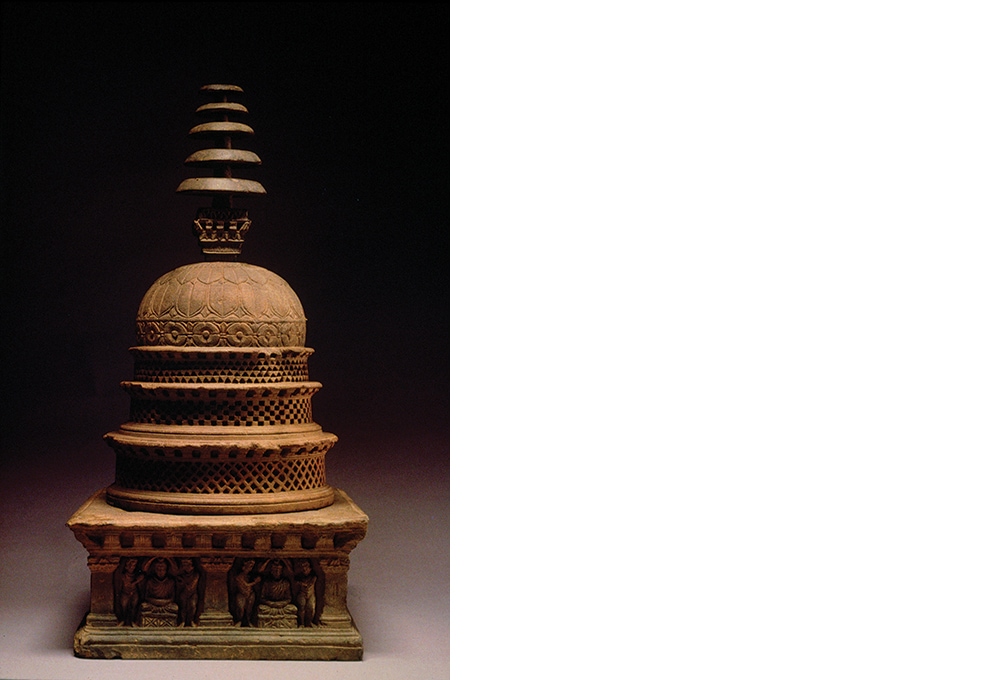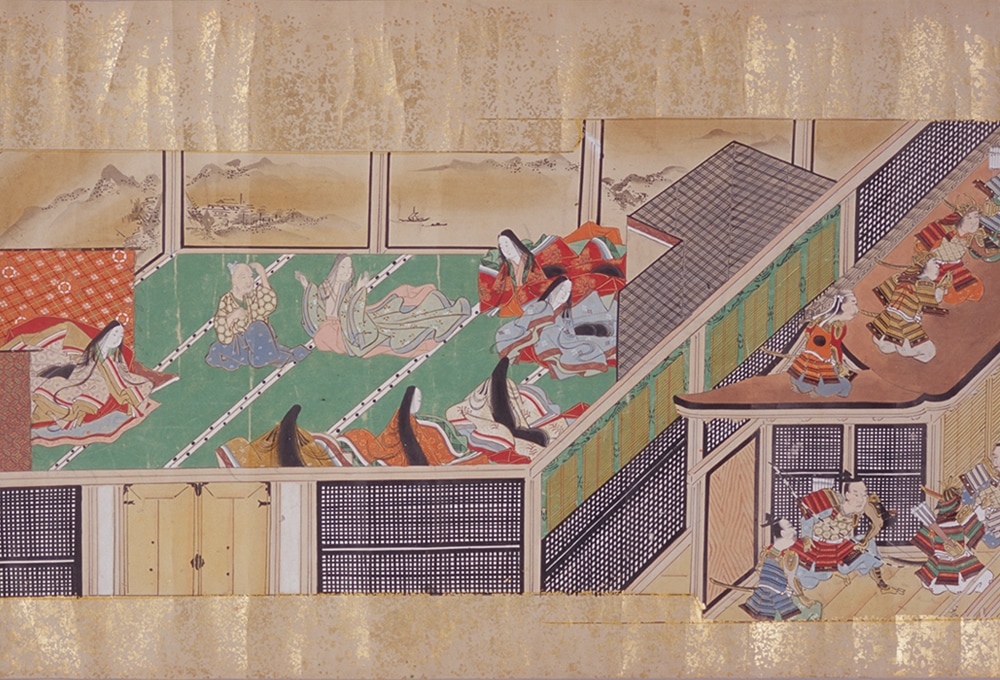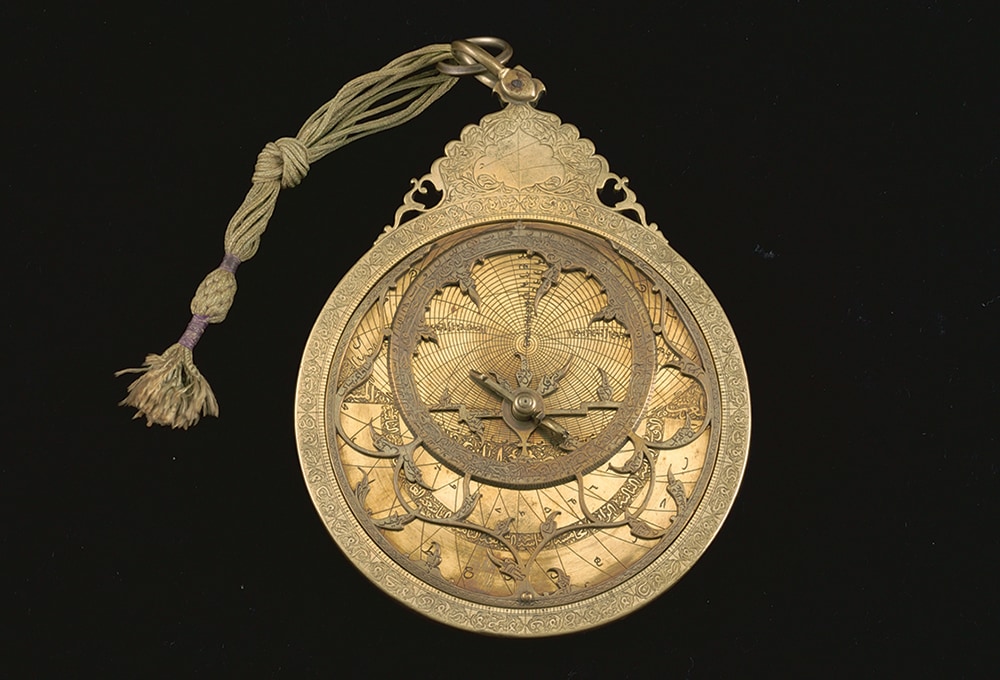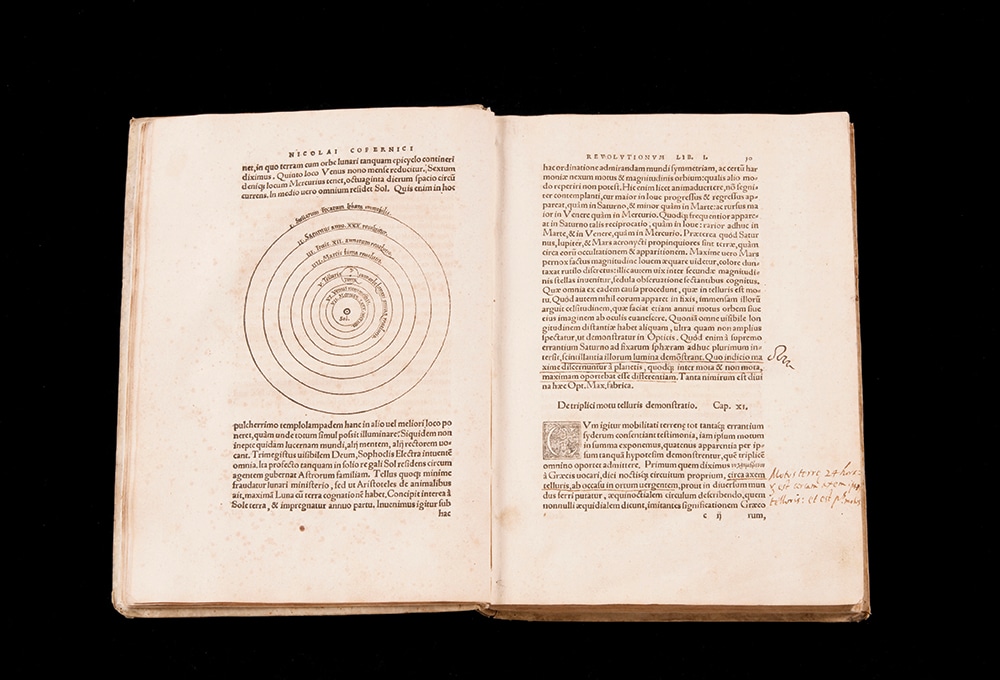The first part of the exhibition focuses on historical cosmologies from around the world. Religious art from the Buddhist, Hindu and Jain traditions shows how we conceived of the cosmos as multidimensional from the earliest of times. The Tale of the Bamboo Cutter, a story from ancient Japan about a princess from the Moon, shows us how myths have helped shape our perception of the heavens. The birth of astronomy as a modern science is charted through a remarkable collection of artefacts from East and West, including Japanese star-charts from the 7th century to the Edo period, astronomical texts from ancient Persia and the Arab world, and first-edition masterpieces from the most renowned astronomers of the Renaissance — Galileo, Kepler, Newton and Copernicus.
This section includes artworks such as:
|
|

Relic Stupa
3rd or 4th century | India
Soapstone
Collection of the Asian Civilisations Museum, Singapore
Copyright of the National Heritage Board, Singapore
This is a model of a stupa, a monument built to consecrate relics of the Buddha or distinguished monks. Ashoka the Great (r. 268 –232 BC), who unified most of the Indian sub-continent for the first time, is said to have re-distributed the Buddha’s relics into 84,000 stupas across his empire. The spire on top, imagined to run directly through the dome into the ground, symbolises the axis-mundi – the central pillar of the cosmos connecting Heaven and Earth.


Taketori Monogatari (The Tale of the Bamboo Cutter)
17th Century
Hand scroll
Collection of Kokugakuin University Library, Japan
The Tale of a Bamboo Cutter dates back to the mid-10th century and is considered to be Japan’s oldest prose narrative about space. The scroll depicts an encounter with Princess Kaguya, whom people believed came from the moon. In that period the moon was considered as an object of awe and subject of fantasy. The Tale of a Bamboo Cutter represents a mythical tale about the universe’s unknown worlds.

Astrolabe
Abd al-A’immah | ca 1700 | Isfahan, Iran
Brass
Collection of the Asian Civilisations Museum, Singapore
Copyright of the National Heritage Board, Singapore
Invented by the Greeks around 220 BCE, astrolabes represent in two dimensions the rotations of three-dimensional celestial spheres. Muslim scientists from the 9th century developed new features which can be observed on this example — shadow squares for solving trigonometry problems, a universal plate with markings for both equatorial and ecliptic coordinate systems, and the movable straight edge called an alidade used to measure the altitude of celestial objects, and so on.
An inscription on the back tells us that this astrolabe was made in the workshop of ’Abd al-A’imma (Slave of the Imams) in Isfahan, Iran. Over 30 instruments and three sundials, known for their accuracy and elegance, survive from this workshop.


De Revolutionibus Orbium Coelestium
(Latin for “On the Revolutions of the Heavenly Spheres”)
Nicolaus Copernicus | 1543
First Edition
Collection of Kanazawa Institute of Technology Library Center, Japan
This is one of the most important books in scientific history. In it, Polish astronomer, Nicolaus Copernicus (1473–1543) set out an alternative model of the universe to Claudius Ptolemy's geocentric system, which had been widely accepted since ancient times. He placed the Sun at the centre of the universe and argued that the Earth moved across the heavens as one of the planets. Copernicus anticipated his ideas would be controversial and waited more than 30 years to publish this book. His ideas were indeed revolutionary. His ‘heliocentric model’ was later developed further by the discovery of elliptical orbits by Johannes Kepler and the law of universal gravitation by Isaac Newton.
